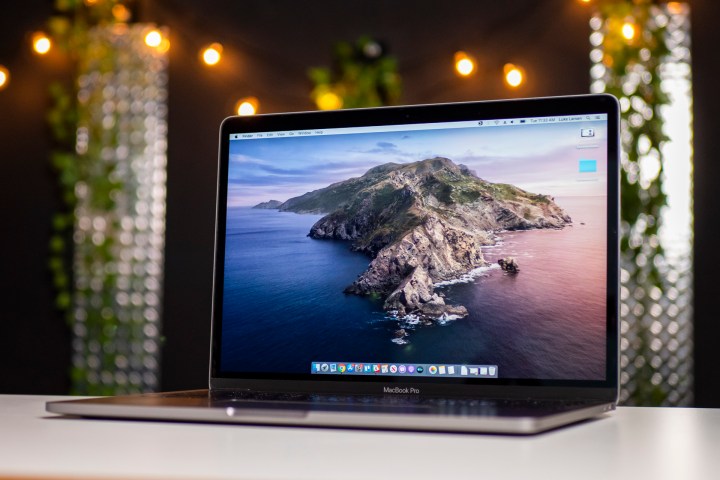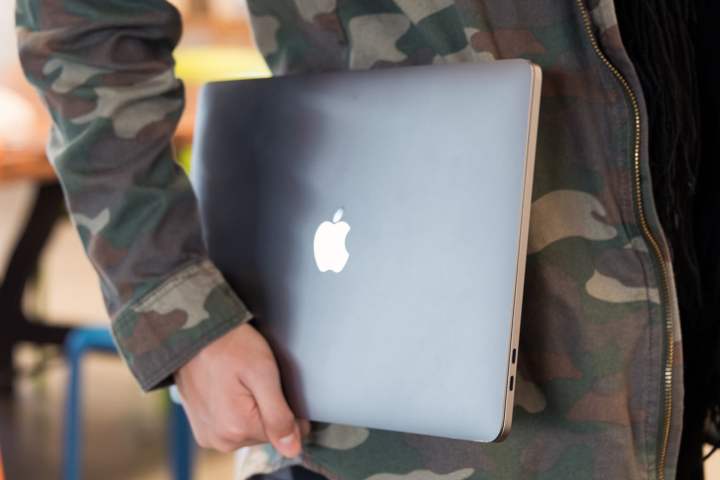Apple and Razer typically offer rather different products from one another, and they often have different customers, too. However, as Razer has trimmed and tightened its laptops into sleek gaming machines, both companies now offer lightweight, great-looking laptops of various sizes.
That means new buyers may find it increasingly tough to pick which path to go down, which is why we’re pitting the Razer Blade 15 against the MacBook Pro to see which is the better choice.
Design

There’s a reason we used to call Razer “the Apple of gaming.” Typically, its hardware looks like black-painted MacBooks, but that changed in the latest design, with the Razer Blade 15 having a more boxy look while maintaining the sleek lines and low-profile of its predecessors. Its bezels have been trimmed down for this generation of hardware, making for a seamless-looking display. Razer had the forethought to keep a larger top bezel, though, which means the webcam remains mounted up top where it belongs.
The MacBook Pro is, as always, a beautiful design, and its silver paint job makes it look starkly different from Razer’s usual black aesthetic (although the Space Gray option is a little closer). It’s also thinner and lighter than the Razer Blade 15. It doesn’t offer quite so much versatility in port selection, though. While some MacBook Pro versions can have up to four
While we found previous generations of the MacBook Pro frustrating in its keyboard design (which has a tendency to fail), the newest versions of the MacBook Pro has a much-improved keyboard. In fact, in our review, we called it “the best Mac keyboard ever released.” The Razer Blade 15, on the other hand, has a fantastic keyboard, though Razer wedged in a full-size up arrow between the shift and question mark keys, which resulted in us frequently hitting the wrong button.
The MacBook Pro has the Touch Bar as an alternative input, but we found it struggled to convince us of its usefulness. That said, you can give it some fun new capabilities with a few handy third-party apps.
Performance

Considering one of the
The MacBook Pro 15, on the other hand, starts at $2,399 with a ninth-gen six-core Intel Core i7 CPU, 16GB of
The MacBook offers better storage options for potential buyers, too. Where the Blade 15 can only offer up to 1TB of PCIe storage, the MacBook Pro can come with up to 8TB of solid-state space — even if it does come at a costly premium.
Portability

One of the classic problems with gaming laptops is that they aren’t the most portable. Razer’s Blade 15 is its best effort yet, but it still comes in heavier than the MacBook Pro. The Blade 15 is 13.98 by 9.25 by 0.78 inches and weighs 4.6 pounds, while the MacBook Pro is 14.09 by 9.68 by 0.64-inches and 4.3 pounds. The difference there isn’t huge, and you’re unlikely to notice it day to day, especially since you have to accept slightly weightier hardware with the 15-inch model.
The Razer Blade has a 97-watt-hour battery, but its heftier hardware does mean it’s not quite as efficient a machine as the Apple alternative. It managed just five hours in our video loop tests and just under four and a half hours in our web browsing test. Apple claims around 11 hours of general usage for its
Gaming or not, the Blade 15 cuts down the MacBook

Apple’s 2020 upgrades to the MacBook Pro 16 make it much more capable than it used to be, and its top-end i9 processor surges ahead of the Razer Blade’s i7. Elsewhere, it’s a beautifully designed piece of equipment, with a gorgeous display, decent battery life, and a slightly lighter frame, meaning you get a good amount for your money. The Razer Blade 15 isn’t substantially slower in everyday tasks, though, and it’s much more capable when it comes to gaming and 3D rendering, thanks to its powerful GPU.
Ultimately, the one you should choose depends on what you plan to do with it. If you run processor-intensive tasks or if you just prefer MacOS, the MacBook Pro is the best option. We still feel that the Razer Blade 15 is an all-around better laptop, though, especially when you consider its graphics power, more comfortable keyboard, and high refresh rate display.
Editors' Recommendations
- The 5 best MacBooks for video editing in 2024
- The best MacBook to buy in 2024
- Best laptop deals: Save on the Dell XPS 14, MacBook Pro 16 and more
- Best Apple deals: Save on AirPods, Apple Watch, iPad, MacBook
- The MacBook Air 15 vs. MacBook Pro 14: the easy way to decide





